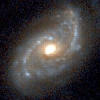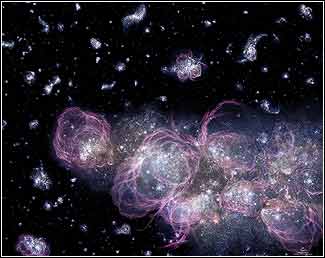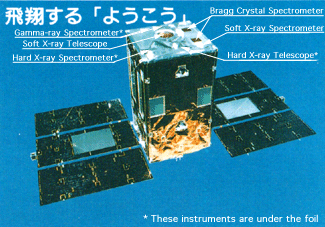





Home:
Abington, Pennsylvania (about 30 miles North of Philadelphia)
College:Widener
University (class of 2004) in Chester, PA
Major:
Physics
Minor:
Astronomy
Email:
jessjp00@yahoo.com
Web page:
~ pictures from summer REU 2002: click
here
(hold the mouse over each picture to see its title or description)
Personal Interests:
exercise,
music, singing, traveling
National Organizations: AWIS-PHL
(Association for Women in Science - Philadelphia chapter), AAS (American
Astronomical Society), Sigma Pi Sigma (National Physics Honor Society -
Widener University), SPS (Society of Physics Students - Widener University)
Career Aspirations: Research
at a University, NASA
Research Experience
I. Widener University
During
my first two years at Widener, I worked with Dr. Harry Augensen and Dr.
W. Heintz studying variable stars. In the summer of 2001 I traveled
to Flagstaff, Arizona for about a week to participate in an astronomical
research project through NURO (National
Undergraduate Research Observatory). The Lowell Observatory on the
Anderson Mesa and Northern Arizona University facilities were used for
this research. The telescope at Lowell is a 31" reflector with a
Tectronix CCD (charge-coupled device) detector. I learned how to
use the equipment and computer systems in the control center.
I also learned how to analyze the data using IRAF. I continued
to analyze data in a following fall semester class. I found the data
for a specific numbered star from different days and used it to make graphs
of the magnitudes as they varied over time with the Julian date.
Continuing in the 2001-2002 school year, I used the Sproul Observatory
at Swarthmore College to
do additional observing for variable stars. There I learned how to
use the computer software and controls for the coordinates of the telescope.
The telescope at Sproul is a long 24" refractor type with an Apogee AP-6
CCD camera. The camera houses a Kodak KAF 1000 chip that has a 1024x1024
pixel array. Our research was conducted to prove if the variable
stars listed in previously published catalogues were actually variable
stars. Some turned out to be non-existent or non variables. Our conclusions
showed that a small percentage were actually variable stars. This
project has been carried out over a few years and it will continue in the
future due to the nature of variable stars. Variable stars have to
be observed over a large amount of time because they have different periods,
long or short, where their magnitude varies sinusoidally, which possibly
comes from either rotation or pulsation. This project was published
and presented as a poster at the 199th American Astronomical Society meeting
in Washington, D.C. on January 10, 2002.
II. Montana State University
Summer REU 2002: Summary
I
participated in the Solar Physics
REU
(Research Experience for Undergraduates) program under the supervision
of Dave McKenzie at
Montana
State University. I was assigned to retrieve data of specific flares
from the Yohkoh
satellite archives using IDL (Interactive Data Language) and Solar Software
(SSW) based in Unix. Yohkoh has four instruments on it to detect
activity on the sun. They are a Bragg Crystal Spectrometer (BCS),
a Hard X-ray Telescope (HXT), a Soft X-ray Telescope (SXT), and a Wide
Band Spectrometer (WBS). The HXT and SXT are used for hard and soft
x-ray imaging and the BCS and WBS are used for spectroscopy. This
project used data primarily from the SXT. There were four flares
from the following dates: 24 January 1992, 21 February 1992, 22 April 1993,
22 March 2001. Data from each flare was prepped using a few
different computer programs. The prepped data was rotated and subtracted
for image quality and for the ability to see features on the flare.
Stack plots were then produced from the flare images and movies.
In each flare there is a cusp-shaped loop structure. The stack plots
were taken from the center column of the loop. In the y direction
of the image the stack included the bottom of the flare to the very top
of the loop and in the x direction stacks were made with both one and five
pixels wide.

This is the Yohkoh Satellite
**Presentation
of Work**
Background
Info
My Project
Programs
Results